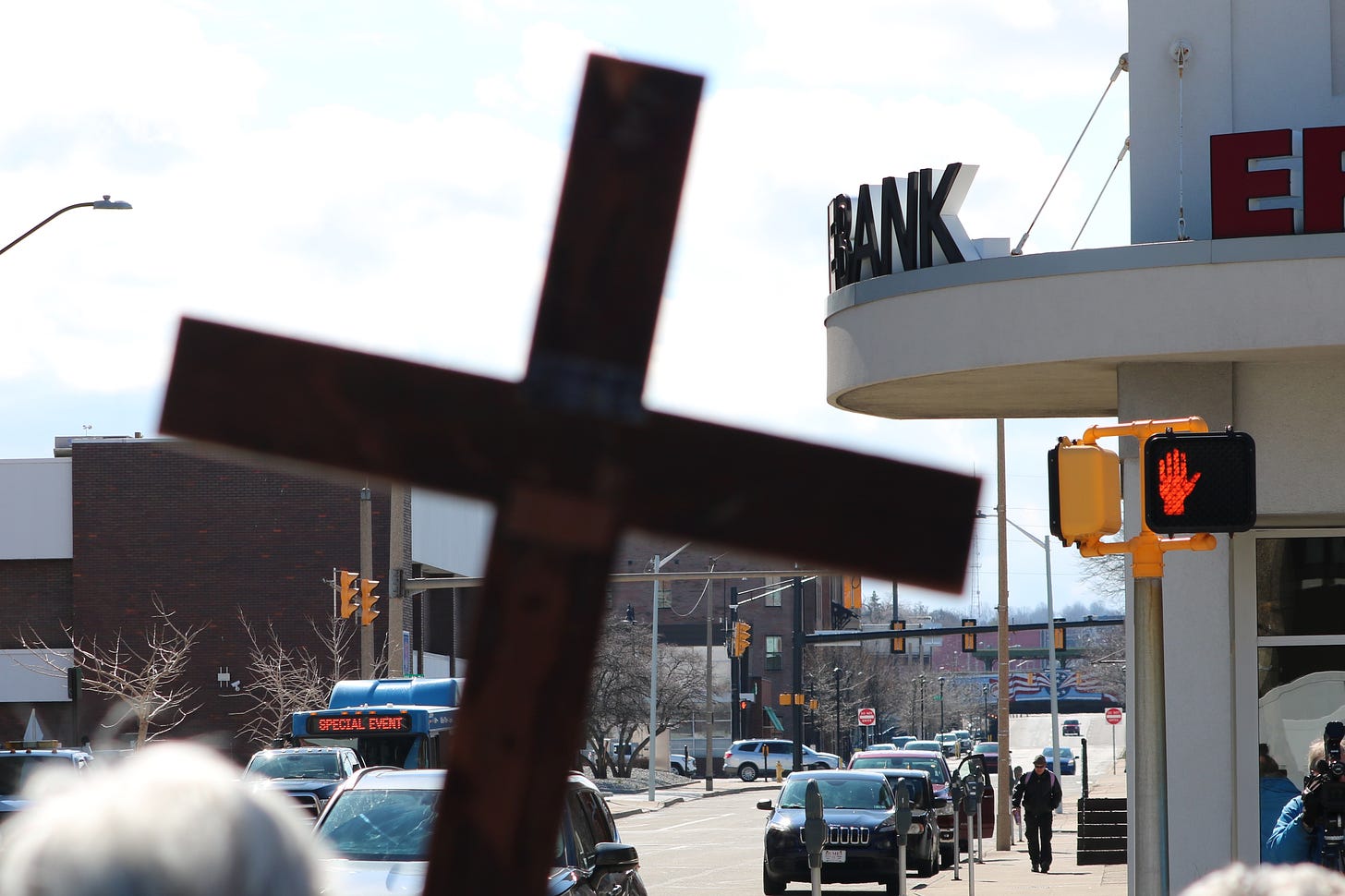What is it, then, that creates the monk? It isn’t the vow any more than the marriage vow makes a person a husband or a wife. The vow is a recognition of what already exists, a public witness to what the couple, or the monk and their community, already see in themselves, and a promise to fulfill the commitment to be who they profess to be. What makes a monk, before any vow can be taken, is the strength of the desire of love in their heart and the self-discipline they are willing to practice that will make it possible for them to fulfill their promise.
Knowing that in spite of our love and our willingness our human natures are weak, Benedict lays out a plan that builds community out of ordinary monks, which community in turn offers a path to holiness to those same monks. He does this through his Rule, which, as we have said, is a practical guide to living well with self, others, and God. He cautions us, though, that it is not an easy way of life. Benedict wants monks who, with Sisyphean effort, wrestle ceaselessly with their egos, never giving up on hope in God’s mercy. He wants monks who listen even when they don’t want to hear, who embrace the hard work of co-creation even at great cost.
In the end, though, he knows it is up to the monks themselves to choose less self and more God, to choose, as he calls it, conversatio morum, faithfulness to the single-minded search for God. To stay rooted and face each new challenge and accept each opportunity to grow rather than find ways—even living in a monastery—to escape becoming one’s best self.
No Guarantees
Which begs the question, then, if living in a monastery is necessary to be a monk. Obviously, it is a necessary condition of the cenobitic monk for whom Benedict wrote his Rule as that is the very definition of a cenobite. But it is not a necessary condition for the Fifth Kind of Monk who is emerging in new monastic movements, in online monasteries like Monasteries of the Heart, in young people who are committing themselves in alternative spiritual and justice communities.
Benedict was astute in his perception of human nature, it’s ordinary, earthy side as well as its soaring, spiritual side. He knew how crucial it is for humans to belong, to become, to be called to be our best selves. Which means the Fifth Kind of Monk, who does not have a built-in community living under a rule and a prioress in the monastery, must be intentional in surrounding themselves with others who will love them in their earthiness and also help them soar to the heights.
The small, quiet whisper of God’s voice can get lost in a monastery just as it can get lost in the world of the Fifth Kind of Monk. Benedict’s monks can live in a monastery, pray with the community every day, perform good works, and still choose to resist God’s call to holiness. The centerpiece of the Rule, Chapter 7, “Humility,” was Benedict’s answer to our weak wills and often reticent spirits. It is not easy, as he so clearly told us, whether one is in the monastery or without. The Fifth Kind of Monk will need a level of self-awareness, other-awareness, and self-discipline different than that of monks in monasteries. It will be imperative that they commit on their own to stable and long-term relationships. They will need others to grow with them in networks of transformation in the communities where they live and work.
Consider the humility and discipline of those who follow the 12-step practice of Alcoholics Anonymous. We could see Benedict’s chapter on humility as a kind of 12-step program which those who identify as the Fifth Kind of Monk may need to create in real time to call themselves to accountability and growth as well as to find moral support and guidance. Hmmm. Maybe this idea has potential for monks who live in monasteries, too!




